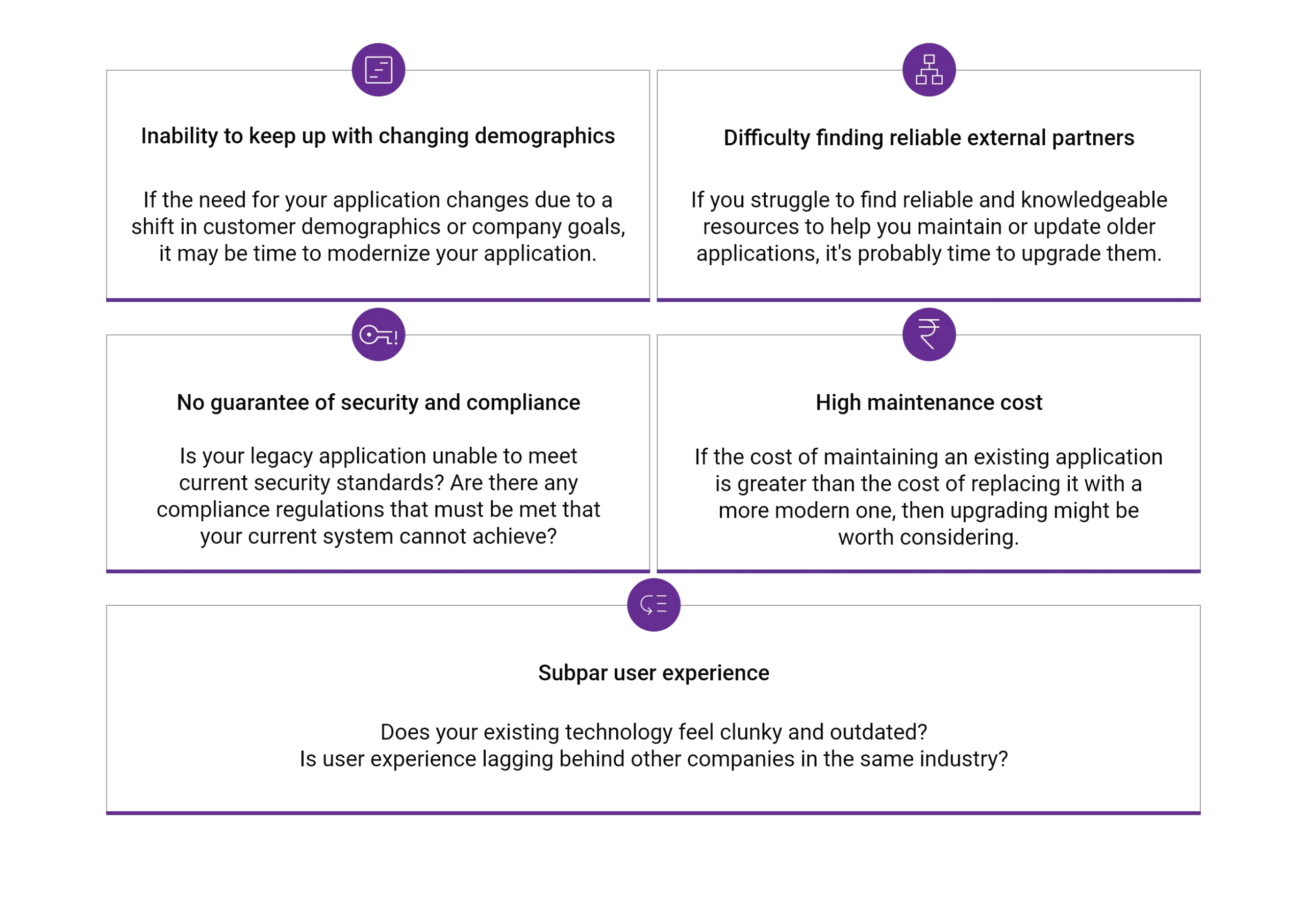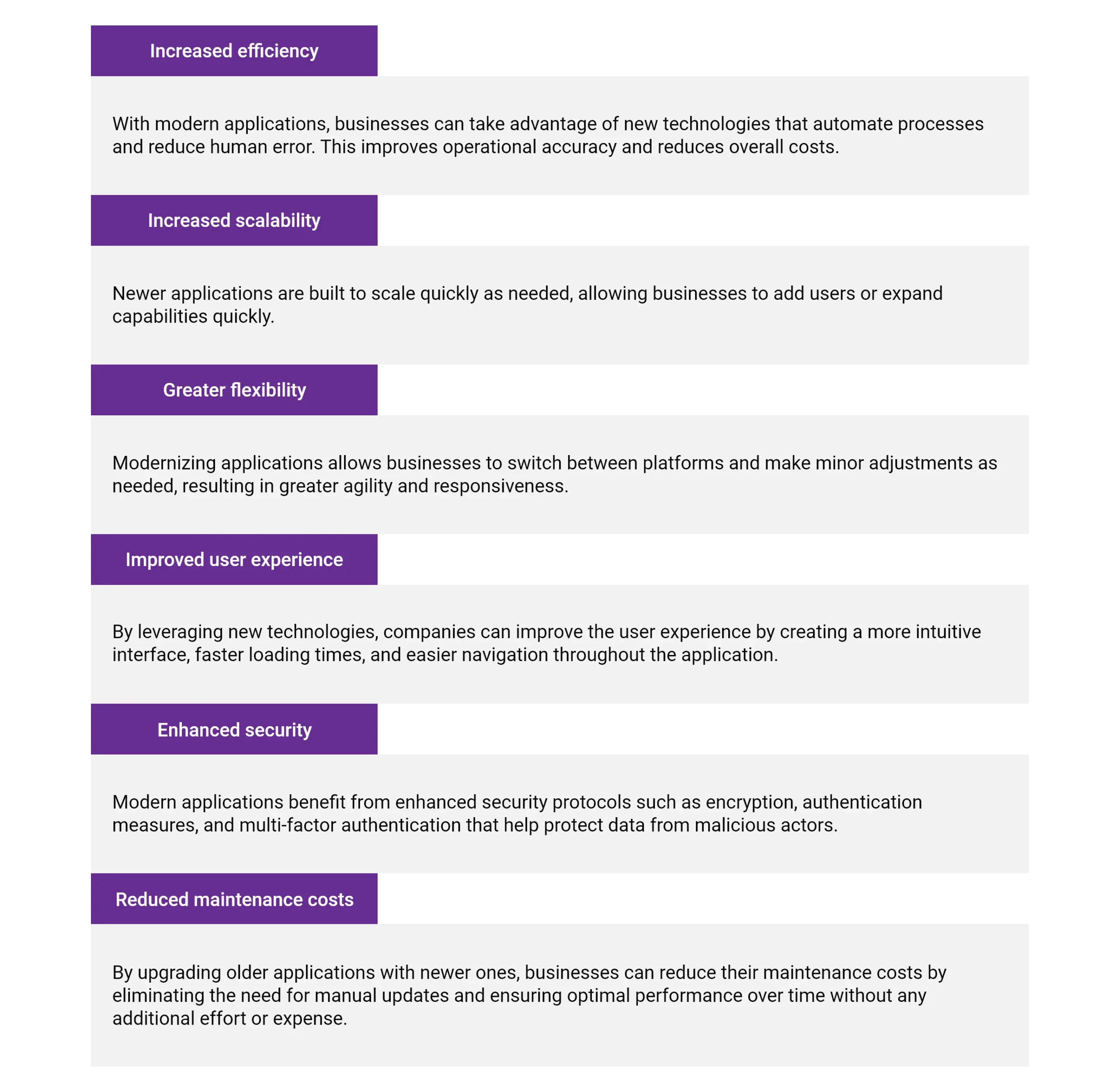Do you have a few applications that are starting to show their age? Maybe they’re not as user-friendly as they used to be or don’t work well with the latest operating systems. If this is the case, it’s time to consider application modernization. Application modernization is an effective way to modernize your organization’s technology infrastructure and ensure it can meet the evolving needs of today’s business environment. By adopting the latest technologies, businesses can remain relevant in a digital-first world, reduce technical debt, and increase efficiency and productivity.
In this blog post, we’ll discuss what application modernization is and why it’s essential for your business. We’ll also give you some tips on how to get started!
What is application modernization and why do it?
Application modernization is transforming legacy systems and applications into modern, more efficient versions. Organizations do this for various reasons, such as to increase performance and responsiveness, improve security, or reduce maintenance costs. By modernizing these applications and systems, businesses can leverage the latest technologies and methodologies, helping them to stay competitive in today’s fast-paced marketplace. Additionally, companies can save time and resources by upgrading existing software instead of developing new software from scratch while still delivering high-quality results. Ultimately, it can help businesses improve efficiency while minimizing costs, making it an important part of any modern enterprise strategy.
How to know if your company needs to modernize its applications?
The question of whether or not a business needs to modernize its applications is not an easy one to answer. On the one hand, several benefits come with keeping software up-to-date and functional, including improved flexibility, faster performance, and better security. On the other hand, rolling out new applications can be costly and time-consuming, and it can often interrupt operations while causing some disruption to employees.
Here are some indications you need to modernize your applications:
 Ultimately, the best approach is to consult with experts who can offer guidance on how you can successfully modernize your applications while minimizing disruptions and downtime.
Ultimately, the best approach is to consult with experts who can offer guidance on how you can successfully modernize your applications while minimizing disruptions and downtime.
The benefits of application modernization
Application modernization is a crucial step in any organization’s digital transformation strategy. By modernizing how we build, deploy, and run software applications, we can ensure that our systems are always up-to-date and working to their full potential. Here are some of the benefits of well-executed application modernization:

Whether we are automating legacy applications to improve scalability or making sure that our sales platform integrates seamlessly with our customer relationship management software, application modernization is a critical step on the path to success. So, if you want your organization to thrive in today’s rapidly changing digital landscape, be sure to embrace application modernization as part of your overall strategy.
Types of application modernization
There are many different types of application modernization that can help businesses to improve their operations and efficiency. One popular method is refactoring, which involves taking an existing application already in production and making changes to improve its performance and usability. Another common form of modernization is re-platforming, which refers to taking an application or program designed for one operating system or platform and adapting it for use on another platform. Additionally, there are various cloud-based solutions that can be used to simplify the day-to-day management of applications, including automated deployment and update tools as well as flexible licensing models.
Application modernization strategy
Some organizations choose to focus on simplifying and streamlining their existing applications, while others take a more transformative approach by completely redesigning their systems from the ground up. Ultimately, the strategy depends upon many factors, including business objectives, budget constraints, and technical capabilities.
For example, companies that require significant customization or have highly complex legacy applications may opt for a more gradual modernization process in order to minimize disruption to business operations. Meanwhile, those with simpler software architectures may be better off embracing change and undertaking more transformative modernization initiatives. Ultimately, the key is to find the right balance that addresses your organization’s needs while aligning with your strategic vision. Whether you’re looking to make minor tweaks or make waves with massive changes, there are plenty of options out there that can help you achieve your goals.
How to get started with application modernization?
Getting started with application modernization can seem daunting, especially if you are unfamiliar with the concept. At its core, app modernization is converting existing software applications to more modern, cloud-based platforms. To get started with this process, it’s crucial to have a clear goal in mind and a solid plan in place. One of the first steps in application modernization is to identify any legacy applications that may be holding your organization back or diverting resources away from more critical workflows.
Once these apps have been identified, you can begin thinking about how they might be upgraded or replaced. The next step is to develop a strategy for moving forward – whether that involves working with an off-the-shelf solution or scheduling custom development work. With these considerations in mind, you can begin to take steps toward modernizing your applications and unlocking their full potential.
Conclusion
In conclusion, application modernization can bring a variety of benefits to businesses. Companies that take the time to upgrade their applications will be able to enjoy improved efficiency and scalability, greater flexibility and user experience, enhanced security, and reduced maintenance costs. Investing in the latest technology will ensure businesses remain competitive, agile, and secure.
Application modernization is essential for any business wanting to stay ahead of the curve. With the right strategy for application modernization and the support of experienced developers and IT professionals, there’s no reason why your organization can’t successfully navigate this process and reap the many benefits it offers.











